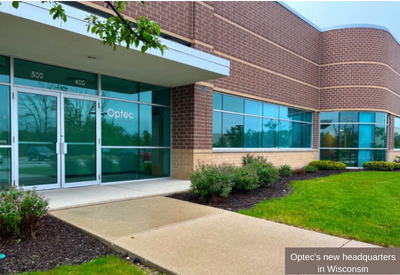Ultimate Guide to Lighting Controls: Avoiding Sensor Failures and Improving Efficiency
By Dañiel R. Luna-Fuller

How to Avoid Lighting Sensor Failures: A Comprehensive Guide to Lighting Controls and Sensors
We’ve all experienced the frustration of being “caught with your pants down”—especially when a lighting sensor suddenly leaves you in the dark at the worst moment. Imagine being in a restroom when the lights go out because the sensor didn’t pick up your presence. Embarrassing, right? But don’t worry—modern lighting controls have come a long way to prevent these mishaps. This guide explores various lighting control nodes, occupancy and vacancy sensors, daylight harvesting, and how dual technology sensors can save you from future “pants down” moments.
What Are Lighting Control Nodes?
Lighting control nodes are the brains behind modern lighting systems, deciding when and how lights should operate. Depending on the environment, nodes can be fixture-mounted or wall/ceiling-mounted, providing granular or centralized control. For example, fixture-mounted nodes are ideal for warehouses, while wall-mounted nodes work well in open office spaces.
Basic Controls to Prevent Lighting Mishaps
Occupancy Sensors
Occupancy sensors detect motion and automatically switch lights on when someone enters a space. They’re perfect for offices, hallways, and conference rooms, reducing wasted energy by turning lights off when the room is empty.
Vacancy Sensors
Vacancy sensors require the user to manually turn lights on, but automatically turn them off when the room is unoccupied. This is useful in residential spaces or restrooms, preventing lights from turning on unnecessarily when someone just passes by.
Daylight Harvesting
Daylight harvesting uses sensors to adjust artificial lighting based on available natural light. This system is especially beneficial in large spaces like classrooms or offices with lots of windows, reducing energy usage by dimming lights when enough daylight is present.
The Power of Dual Technology Sensors
Dual technology sensors combine passive infrared (PIR) and ultrasonic detection for higher accuracy. PIR detects body heat, while ultrasonic sensors pick up motion via sound waves. These sensors are less likely to leave you in the dark, especially in spaces where you may remain stationary for long periods, like restrooms or conference rooms.
Where Dual Technology Sensors Shine
In areas where people may be seated or standing still, such as restrooms, classrooms, and offices, dual technology sensors ensure the lights stay on. They minimize the chance of a sensor failure that could leave you in the dark, especially during those “pants down” moments.
Practical Applications of Lighting Control Nodes
Offices: Occupancy and Vacancy Sensors
Occupancy sensors are ideal for shared spaces like break rooms, while vacancy sensors are better for private offices, ensuring lights only turn on when needed.
Classrooms and Open Offices: Daylight Harvesting
In spaces with inconsistent natural light, daylight harvesting helps maintain optimal lighting conditions, reducing reliance on artificial lighting.
Warehouses: High Bay Nodes
For large industrial spaces, fixture-mounted high-bay nodes work best, lighting up only areas where workers or forklifts are active, reducing energy consumption.
Conclusion: No More “Pants Down” Moments
With modern lighting controls—especially dual technology sensors—you can avoid the dreaded moment when the lights go out unexpectedly. By choosing the right nodes and sensors for your space, you’ll optimize energy efficiency and ensure no one gets left in the dark, whether in an office, classroom, or restroom.
About the Author:

Dañiel R. Luna-Fuller is the business owner of Luna Cultivation Consultants and Luna Lighting, a project-based design service that focuses on photometric layouts. Luna Lighting will assist with project energy audits and help find a solution that will allow for energy rebates through local utilities. Find more here

Other Articles from Dañiel R. Luna-Fuller
Embracing User-Friendly Bluetooth Controls for Modern Lighting Systems – US Lighting Trends
The Power of Value Engineering in the Lighting Industry – US Lighting Trends
Horticulture Lighting – “It isn’t all Cannabis!” – US Lighting Trends









